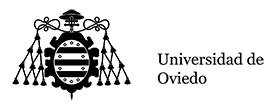Estudia
- Artes y humanidades
- Ciencias
- Ciencias de la salud
-
Ciencias sociales y jurídicas
- Doble Grado en Administración y Dirección de Empresas y Derecho
- Doble Grado en Criminología y Derecho
- Grado en Administración y Dirección de Empresas
- Undergraduate Degree on Sport and Physical Activity Sciences
- Grado en Comercio y Marketing
- Grado en Contabilidad y Finanzas
- Bachelor´s Degree in Criminology
- Grado en Derecho
- Grado en Economía
- Grado en Educación Social (centro adscrito privado)
- Grado en Gestión y Administración Pública a Distancia (online)
- Grado en Maestro en Educación Infantil
- Grado en Maestro en Educación Infantil (centro adscrito privado)
- Grado en Maestro en Educación Primaria
- Grado en Maestro en Educación Primaria (centro adscrito privado)
- Grado en Pedagogía
- Grado en Relaciones Laborales y Recursos Humanos
- Grado en Trabajo Social
- Grado en Turismo
- Ingeniería y arquitectura
- Información, acceso y becas
Expansión Internacional de la Empresa
- Tutorías Grupales (4 Hours)
- Prácticas de Aula/Semina (21 Hours)
- Clases Expositivas (28 Hours)
This course is scheduled in the 3rd year within the Commerce and Marketing Degree Plan and it is developed within the International Trade module. It aims at providing a first approach to international strategy. Consequently, it is developed once the student has studied the Introduction to Business (1st year, Basic Core) and its contexts relative to firms competitive and corporate strategies
There are none specific requirements to take the course. However, it is advisable for students to take previously the Introduction to Business course.
Specific Competencies (SC), General Competencies (GC), and Learning Results (LR) as listed in the Commerce and Marketing Degree report: SC19 – To know and be able to apply tools for commercial communication; SC24: To identify and assess business opportunities; SC25: To understand different international growth strategies; GC1 Ability for analysis and synthesis; GC3 Learning ability; GC5 Ability for working and learning independently; GC6 Ability for teamwork; GC9 Decision-making; GC13: To understand diverse and multicultural contexts; GC14 Critical reasoning; GC15 Ethic compromise; GC16: Adjustment to new environments; GC18 Leadership; GC19: Knowledge about different cultures; GC24: To apply equal treatment and opportunities to men and women within the working context; GC25: To apply equal treatment and universal accessibility within the working context; LR4.8. To inform and provide advise relative to international relations and international trade, To summarize and present the results of the analyses and studies carried out, whether individually or in group; LR4.10. To identify and understand the different international growth strategies; LR4.11. To identify the different stages of the international growth process; LR4.12. To identify and understand the different entry modes in foreign markets; LR4.13. To analyze the international environment and identify opportunities for the international growth of firms; LR4.14. To design international growth strategies for firms; LR4.15. To apply the accrued knowledge relative to internationalization processes to small and medium size firms; LR4.16. To apply the accrued knowledge relative to internationalization processes to joint ventures formation.
In short, this course contents deal with (I) understanding the international strategy as a corporate strategy (particularly relevant in international environments featured by globalization and technological change); (II) understanding international growth patterns in terms of both target countries and entry modes and; (III) studying the international growth process in the particular case of small and medium size firms. The course planning is as follows:
Lesson 1. Global environment and business
1.1 Globalization: a first approach to the concept
1.2 Globalization: Drivers and dimensions
1.3 Globalization and the 2030 Agenda
1.4 The globalization debate: a critical approach
Lesson 2. The international strategy
2.1 A conceptual approach to the strategy and its different levels
2.2 External and internal analysis
2.3 Reasons for developing and international strategy
Lesson 3. Target countries: Analysis and selection
3.1 Introduction
3.2 Distance among countries: the CAGE model
Lesson 4. Entry mode choice (I): Exports
4.1 Introduction
4.2 Different entry modes through exports
Lesson 5. Entry mode choice (II): Cooperation agreements
5.1 Introduction
5.2 Different types of cooperation agreements
Lesson 6. Entry mode choice (III): Foreign direct investments (FDIs)
6.1 Introduction
6.2 Different types of FDIs
Lesson 7. The internationalization process
7.1 The sequential approach to the international process
7.2 New approaches to international growth
7.3 Internationalization of firms from emerging economies
Learning methodology includes both, activities which require attendance (in-class activities) and activities that do not.
Activities requiring attendance
Lectures: Sessions aimed at introducing and developing the key ideas and concepts related to each topic. They involve a presentation by the teacher who will use audio–visual support. A basic bibliography will be available for students in order to help following and understanding these lectures.
Seminars: They are aimed at developing practical contents within each topic. They involve interaction between the teacher and the students. Students are expected to discuss issues and cases, critically formulate their own arguments, and solve problems related to the course contents.
Group tutorials: They are aimed at solving questions, verifying that students understand and develop the contents correctly, providing complementary bibliography, and checking the progress of teamwork. They will be structured in small groups in order to get a personal interaction teacher-student and provide extra help related to the particular difficulties of each student.
Evaluation sessions: To control the learning progress of the student.
Non-attendance required activities
Individual work: It is basically related to (1) studying the contents that are presented in lectures, and (2) preparing in advance the necessary material in order to be able to attend seminars.
Team work: Each student will participate in a team which will develop a work dealing with an area related to the course contents. This kind of work will help the student to develop his/her teamwork skills, as well as competences and skills related to gathering information, analyzing and summarizing contents, developing arguments and making presentations.
Materials needed to undertake all the activities correctly will be available on-line at the course Moodle —teaching notes, readings, case studies, etc. The Moodle also provides the students the opportunity to develop discussion forums. Both, email and Moodle will also facilitate communication between academic staff and students.
The following tables summarize a breakdown of different activities by lesson.
As an exceptional situation, remote teaching activity could be developed if required by sanitary conditions. Students would be informed about changes in teaching methodology.
In-class activities | Distance-learning activities | |||||||||
Lessons | Total | Lectures | Seminars | Tutorial groups | Assessment | Total | Team work | Individual work | Total | |
Lesson 1 | 18 | 4.5 | 1.5 | 6 | 3 | 9 | 12 | |||
Lesson 2 | 20 | 3 | 3 | 6 | 4 | 10 | 14 | |||
Lesson 3 | 28 | 4.5 | 4.5 | 9 | 7 | 12 | 19 | |||
Lesson 4 | 19 | 3 | 3 | 6 | 4 | 9 | 13 | |||
Lesson 5 | 27 | 4.5 | 4.5 | 9 | 5 | 13 | 18 | |||
Lesson 6 | 19 | 3 | 3 | 6 | 4 | 9 | 13 | |||
Lesson 7 | 11.5 | 2 | 1.5 | 3.5 | 2 | 6 | 8 | |||
All lessons | 4 | 4 | 4 | |||||||
Assessment | 3.5 | 3.5 | 3.5 | |||||||
Total | 150 | 24.5 | 21 | 4 | 3.5 | 53 | 29 | 68 | 97 | |
(%) | 100 | 16.3 | 14 | 2.7 | 2.3 | 35.3 | 19.3 | 45.3 | 64.7 | |
Hours | % | Total | ||
Requiring attendance | Lectures | 24.5 | 16.3 | 53 (35.3%) |
Seminars | 21 | 14 | ||
Other kind of practical activities | 0 | |||
Practical activities at hospitals or similar | 0 | |||
Tutorial groups | 4 | 2.7 | ||
External practical activities | 0 | |||
Assessment | 3.5 | 2.3 | ||
No-requiring attendance | Team work | 29 | 19.3 | 97 (64.7%) |
Individual work | 68 | 45.3 | ||
Total | 150 | |||
Final assessment will differ depending among the exam call (ordinary or extraordinary).
Ordinary calls (January and May): weighted average of the continuous assessment process (40%) and the final exam (60%). Continuous assessment activities will take place along the teaching semester and WILL NOT be repeated, so that the continuous assessment WILL BE THE SAME for January and May calls.
Extraordinary call (June): The final exam will value 100% (no continuous assessment taken into account).
The following table shows the grading process that will be followed for ordinary calls.
Assessment | Activities | Weight in final grade (%) |
Continuous | Activity 1: Partial tests/proofs/exercises that will take place within the teaching period and PARTICIPATION in in-class activities. Activity 2. Attendance to some specific conferences/meetings related to the course contents* Activity 3: Team-work. The students will be required to develop different activities through team working. | 25 5 10 |
Final Exam | Final exam | 60 |
*As an exceptional situation, some of these activities could be planned in dates different from scheduled teaching sessions.
Getting a minimum of 2.4 points in the final exam is a needed requirement to pass this course. Students getting a lower mark in the final exam could only achieve a maximum score (exam + continuous assessment) of 4.5 points (fail).
Minimum attendance requirement to participate in the continuous assessment process: 75% of the teaching sessions. A list of attendance requiring the students’ signature will be used. Failing to sing in this list for a particular teaching session means no attendance to that teaching session.
In case of adapted assessment (ONLY for students officially recognized for this process by the dean office), the assessment process will be the following:
- Final exam (same exam and conditions as in regular assessment, minimum of 2.4 points required): 60%
- Additional exam (that will take place at the same date of the final exam): 40%
Anyhow, this adapted assessment process must be approved by the faculty’s Government Committee.
Ethical code of the University of Oviedo is in force (https://www.uniovi.es/en/conocenos/uniovi/nosotros/etica)
Basic references
Cavusgil, S.T.; Knight, G. and Riesenberger, J.R. (2013): A Framework for International Business, PearsonPrenticeHall.
Ghemawat, P. (2007): Redefining Global Strategy: Crossing Borders in a World Where Differences Still Matter, Harvard Business School Publishing Corporation.
Hollensen, S. (2017): Global Marketing, Pearson.
Additional references
Cullen, J.B. and Parboteeah, K.P. (2009): International business: strategy and the multinational company, Routledge.
Dess, G.G., Lumpkin, G.T. & Eisner, A.B. (2013): Strategic management. Text and cases, McGraw Hill,.
Grant, R.M. (2012): Contemporary strategy analysis, Wiley.
Guillén, M & García, E. (2010): The new multinationals, Cambridge University Press.
Guillén, M. & GarcíaCanal, E. (2012): Emerging markets rule: growth strategies of the new global giants, McGrawHill
Hill, C.W.L. (2012): International business: Competing in the global market place, McGraw Hill.
Johnson, G., Scholes, K. & Whittington, R. (2008): Exploring corporate strategy: Text and cases, Pearson.
López-Duarte, C., Vidal-Suárez, M. & González-Mieres, C. (ed.) (2016): Estrategias de internacionalización de la empresa. Casos prácticos, Septem Ediciones.
Shenkar, O. & Luo, Y. (2008): International business, Sage Publications.
Verbeke, A., (2013): International business strategy, Cambridge University Press.

